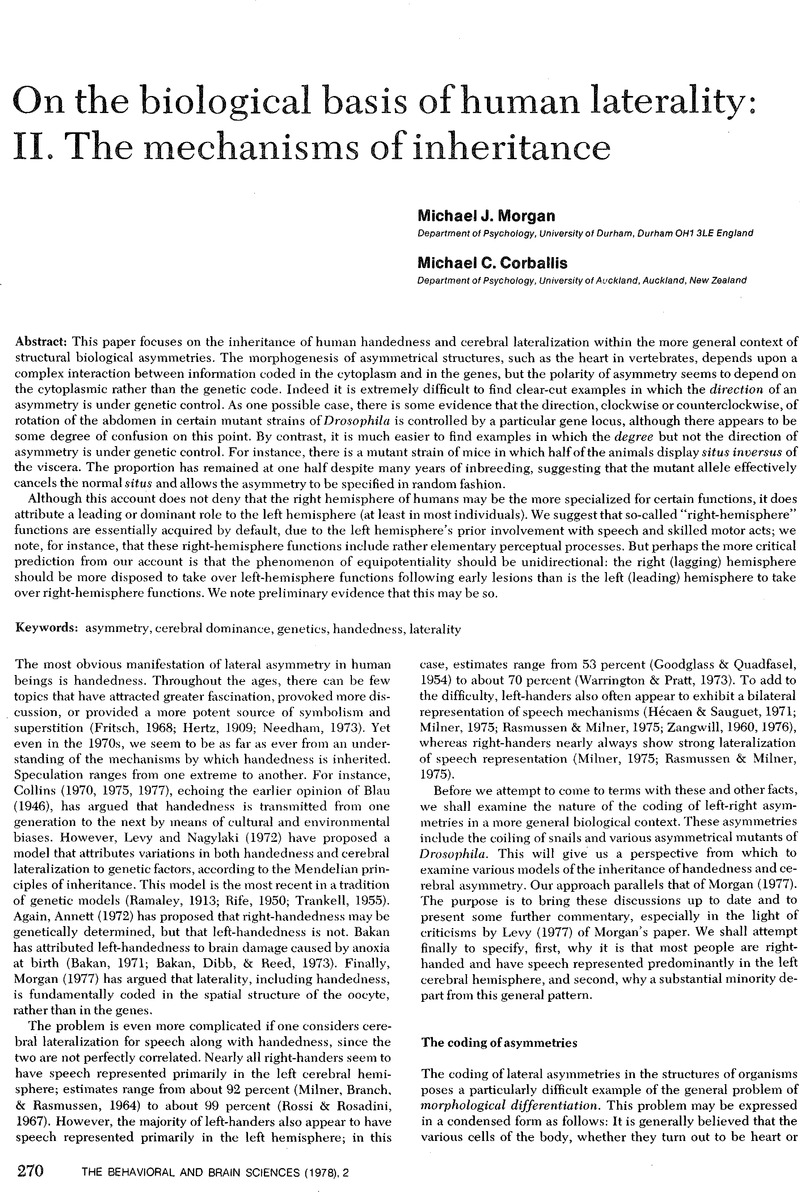Crossref Citations
This article has been cited by the following publications. This list is generated based on data provided by Crossref.
Morgan, M. J.
and
Corballis, M. C.
1982.
Symmetrical inheritance of asymmetry in the flounder?.
Behavioral and Brain Sciences,
Vol. 5,
Issue. 2,
p.
265.
Policansky, David
1982.
Flatfishes and the inheritance of asymmetries.
Behavioral and Brain Sciences,
Vol. 5,
Issue. 2,
p.
262.
Bisazza, Angelo
J. Rogers, L
and
Vallortigara, Giorgio
1998.
The Origins of Cerebral Asymmetry: A Review of Evidence of Behavioural and Brain Lateralization in Fishes, Reptiles and Amphibians.
Neuroscience & Biobehavioral Reviews,
Vol. 22,
Issue. 3,
p.
411.
Orbach, Dara N.
Brennan, Patricia L. R.
Hedrick, Brandon P.
Keener, William
Webber, Marc A.
and
Mesnick, Sarah L.
2020.
Asymmetric and Spiraled Genitalia Coevolve with Unique Lateralized Mating Behavior.
Scientific Reports,
Vol. 10,
Issue. 1,





